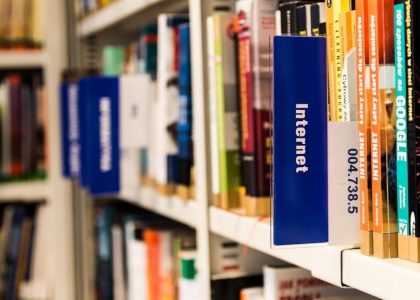OptiBond Solo Plus is a single-component dental adhesive designed for both direct and indirect bonding applications. It features a unique technology that provides protection against microleakage and ensures high bond strengths to various surfaces, simplifying the bonding process.
Overview of OptiBond Solo Plus
OptiBond Solo Plus is a total-etch, single-component dental adhesive formulated for a wide array of clinical applications. Its unique ethanol-based composition facilitates a single-layer application, contrasting with the multiple layers often needed by acetone-based adhesives. This adhesive is designed to provide strong and reliable bonds for both direct and indirect restorations, enhancing the longevity and performance of dental work. The inclusion of a 0.4μm filler reinforces the hybrid zone and penetrates dentinal tubules, creating a structured bond that surpasses those achieved by unfilled or nanofilled systems. It offers versatility in delivery options with both bottle and Unidose packaging, adapting to diverse clinical needs. OptiBond Solo Plus can be utilized to bond composite, amalgam, porcelain and indirect bonding of inlays, onlays, veneers, crowns and posts. It is designed to work effectively with both light and dual cure applications.
Composition and Technology
OptiBond Solo Plus utilizes an ethanol-based formula, which reduces the need for multiple applications. The adhesive is 15% filled with a 0.4μm filler that reinforces the bond and penetrates dentinal tubules, enhancing strength and stability.
Ethanol-Based Formula
OptiBond Solo Plus employs an ethanol-based solvent system, a key feature that distinguishes it from acetone-based adhesives. This formulation choice has several important implications for the application process and the overall performance of the adhesive. The use of ethanol as a solvent helps to reduce the need for multiple layers and repeated applications, which are often required with acetone-based alternatives. Ethanol’s slower evaporation rate compared to acetone provides a more controlled working time, allowing for a more predictable and consistent application. The ethanol carrier also facilitates the effective transport of adhesion promoters, ensuring a uniform distribution of the bonding agents across the treated surfaces. This feature contributes significantly to the adhesive’s ability to achieve reliable and strong bonds. Furthermore, an ethanol-based formula is known for its stability and compatibility with other dental materials, making OptiBond Solo Plus a versatile option for various clinical situations. The formulation is designed to minimize technique sensitivity, making it more user-friendly for clinicians.
Filler Technology⁚ 0.4μm Particles
OptiBond Solo Plus incorporates a proprietary filler technology utilizing 0.4μm particles, a critical component in its performance. This specific filler size is not arbitrary; it is designed to enhance the adhesive’s mechanical properties and bonding capabilities. The 0.4μm filler particles are instrumental in reinforcing the hybrid zone, the interface between the adhesive and the tooth structure. This reinforcement is crucial for creating a stable and long-lasting bond. Moreover, these particles are small enough to penetrate the dentin tubules, forming a true structured bond that goes beyond the surface level. This feature ensures the adhesive interacts intimately with the tooth structure, thus creating a robust bond. Unlike unfilled or nano-filled systems, OptiBond Solo Plus’ filler technology provides superior stability and bond strengths. The filler also contributes to the adhesive’s overall durability, making it less susceptible to wear and degradation over time. This unique filler technology directly contributes to improved long-term results in both direct and indirect applications, offering clinicians a reliable bonding solution.
Indications and Applications
OptiBond Solo Plus is indicated for a wide array of applications, including direct and indirect bonding procedures. Its versatility allows it to be used with composites, metals, amalgam, and porcelain, making it a comprehensive adhesive solution.
Direct Bonding Applications
OptiBond Solo Plus is highly effective for direct bonding procedures, facilitating the adhesion of composite materials to enamel and dentin. This includes a variety of restorative applications such as direct composite fillings, where the adhesive’s strong bond ensures the longevity and durability of the restoration. The unique filler technology not only reinforces the hybrid zone but also penetrates the dentin tubules, creating a true structured bond not found in unfilled adhesive systems.
The single-component nature of OptiBond Solo Plus simplifies the direct bonding process, reducing the need for multiple applications and ensuring a reliable bond. It is also suitable for repairing existing composite restorations. Its ease of use makes it an excellent choice for daily clinical practice. Moreover, it is compatible with a variety of direct restorative materials and is designed to provide a long-lasting bond, ensuring the success of the procedure, making it a reliable option for various direct restorative cases.
Indirect Bonding Applications
OptiBond Solo Plus is also indicated for indirect bonding procedures, where it facilitates the adhesion of indirect restorations such as inlays, onlays, veneers, crowns, and posts. This adhesive, when used in conjunction with resin cements like NX3, ensures a strong and reliable bond between the restoration and the tooth structure. OptiBond Solo Plus’s capacity to bond to various substrates, including porcelain and metal, makes it a versatile option for a wide range of indirect restorations. The adhesive is designed to provide excellent bond strength, even in areas with limited light access, especially when used with a dual-cure activator. Its filled formulation enhances the stability and longevity of indirect restorations by reinforcing the bond at a deeper level within the dentinal tubules. This ensures that the indirect restorations are securely in place and can withstand the forces of mastication. The application process remains simple, even for indirect techniques, which promotes efficient workflows in clinical settings. It also offers enhanced compatibility with various indirect restorative materials.
Application Instructions
The application of OptiBond Solo Plus involves a straightforward process. Proper surface preparation, including etching, is crucial before applying the adhesive. The adhesive should then be applied, air-thinned, and light-cured for optimal bonding strength.
Surface Preparation⁚ Etching
Before applying OptiBond Solo Plus, proper surface preparation is essential to achieve optimal bonding. This process begins with etching the enamel and dentin surfaces of the tooth. The etching process involves the application of a dental etchant, typically a phosphoric acid solution, to create a micro-porous surface. This micro-porosity is crucial as it allows the adhesive to penetrate and form a strong bond with the tooth structure.
For effective etching, apply the etchant for a duration of 15 seconds to both the enamel and dentin. Following the etching period, thoroughly rinse the etched area with water to remove all traces of the etchant. It is vital to ensure that no etchant residue remains as it can interfere with the bonding process and weaken the overall bond strength. After rinsing, gently air-dry the tooth surface, ensuring it is clean and free from moisture before proceeding with the adhesive application. Proper etching is a key step in ensuring the long-term success of the restoration.
Applying OptiBond Solo Plus
Following the surface preparation, the next critical step involves the application of OptiBond Solo Plus. Using an applicator, gently apply OptiBond Solo Plus to the etched enamel and dentin surfaces. It is important to use a light, brushing motion while applying, ensuring that the adhesive is evenly distributed across the entire prepared area. The application should be done for approximately 15 seconds, allowing the adhesive to thoroughly penetrate the etched surfaces.
Avoid pooling of the adhesive in any particular area, as this can lead to uneven bonding. The goal is to achieve a thin, uniform layer of OptiBond Solo Plus on the tooth structure. This single-component adhesive is designed for easy application, eliminating the need for multiple layers which simplifies the process and reduces the risk of errors. Proper application ensures that the adhesive can effectively bond to the etched tooth surface, providing a strong foundation for the subsequent restorative material.
Air Thinning and Light Curing
After applying OptiBond Solo Plus for the recommended 15 seconds, the next step is crucial⁚ air thinning. This process involves gently using a stream of air to evaporate the solvent and thin the adhesive layer. Direct a gentle stream of air over the applied adhesive for approximately 3 seconds. This air thinning step is important to remove excess solvent, ensuring that the adhesive is not too thick and allowing for optimal bond strength.
After air thinning, light curing is performed. This step polymerizes the adhesive, solidifying it for further restorative procedures. Use a dental curing light following the manufacturer’s recommendations for the recommended curing time. The light curing process ensures that the OptiBond Solo Plus is fully hardened, creating a solid, reliable bond to the tooth structure. Avoid light curing without proper air thinning, as this might lead to less effective bonding and compromised restoration quality. This step is essential to achieve the desired outcome with OptiBond Solo Plus.
Additional Considerations
OptiBond Solo Plus can be used in dual-cure applications with an activator. It is also compatible with various materials, including composites, metals, amalgam, and porcelain, ensuring versatility in different clinical scenarios.
Dual Cure Activation
OptiBond Solo Plus, while primarily a light-cured adhesive, offers the flexibility of dual-cure activation for situations where light accessibility is limited or non-existent. This is particularly relevant for indirect restorations such as inlays, onlays, and crowns, where light penetration to the adhesive layer might be compromised. The dual-cure capability is achieved through the use of a separate activator, which when combined with OptiBond Solo Plus, allows for chemical curing in addition to light curing. This ensures complete polymerization of the adhesive, leading to reliable bond strength even in the most challenging clinical scenarios. It is important to note that the dual-cure activator is an additional component and not part of the standard OptiBond Solo Plus system. Using the dual-cure option is essential for indirect restorations with limited or no light access, guaranteeing a strong and durable bond. For core materials, it’s crucial to avoid self-cure mode and always light cure them, even when using the dual-cure option for the adhesive.
Compatibility with Other Materials
OptiBond Solo Plus demonstrates excellent compatibility with a wide range of dental materials, making it a versatile choice for various restorative procedures. It can be used effectively with composite resins for direct restorations, providing a strong bond to both enamel and dentin. For indirect restorations, OptiBond Solo Plus is compatible with materials such as porcelain, metal, and amalgam when used in conjunction with appropriate resin cements like NX3; This compatibility extends to core materials, where it ensures reliable adhesion for build-ups. When using dual-cure resin cements, OptiBond Solo Plus can be activated with a dual-cure activator, providing the necessary chemical cure, particularly in areas where light curing is challenging. It’s crucial to follow the specific instructions for each material combination, as proper etching and surface preparation are essential for optimal bonding. The adhesive’s formulation, including its ethanol-based solvent and 0.4μm filler, contributes to its versatility and compatibility, allowing for predictable and long-lasting results.



